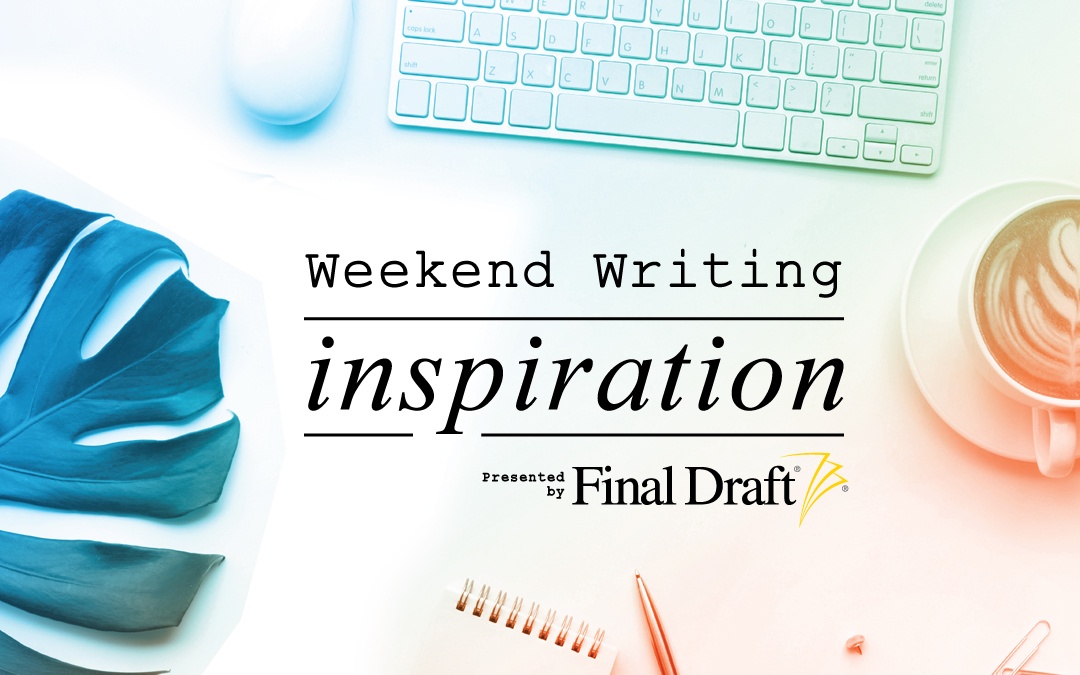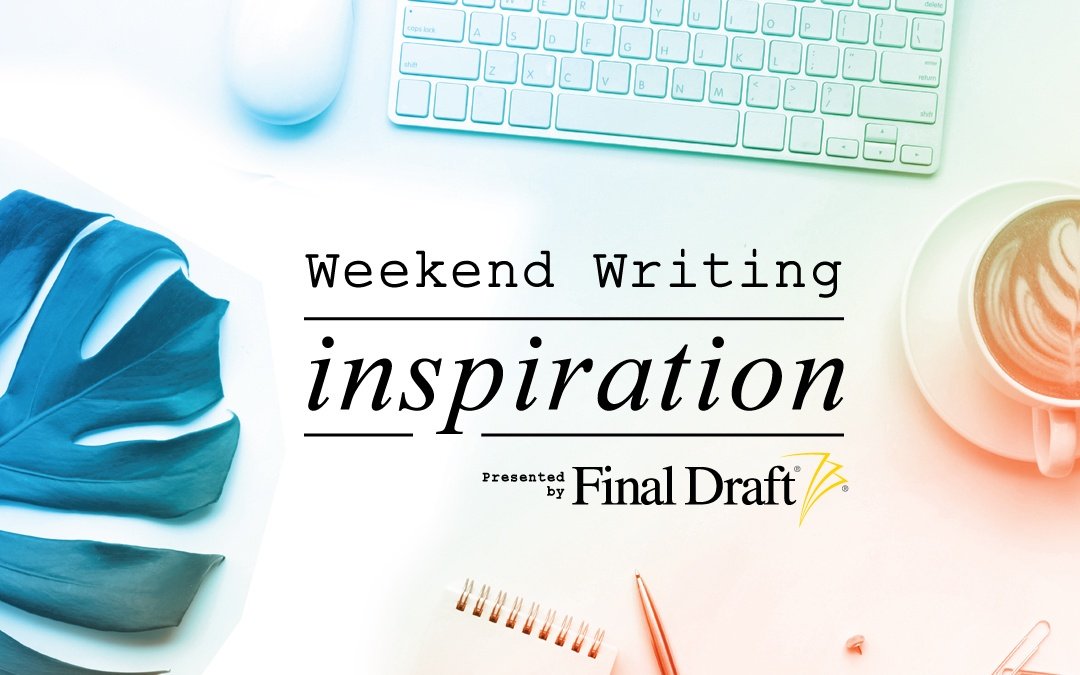Weekend Writing Inspiration: Navigating a Rewrite of Your Script
May 17, 2019
| “What’s the best way to get through the ups and downs of a rewrite?” |
Rewriting is a fact of life when it comes to screenwriting. Newbie screenwriters will often say, “I finished my script!” but what they mean is, they finished their first draft. They usually don’t realize how much more there is to go. Experienced screenwriters, on the other hand, know that multiple drafts will be required before a script is “done,” and even then, there’s gray area because so much story revision happens after a script is filmed, let alone picked up for production.
Navigating a Rewrite of Your Scrip
- Don’t polish first
- Do start with a rewrite strategy
- Don’t let the old script hold you back
- Do manage overwhelm with small steps
- Don’t make the ups and downs mean anything
- Do be ready to rewrite again
If you’re not mentally prepared for multiple rewrites and don’t have a rewriting strategy, it’s easy to get impatient or overwhelmed by the ups and downs of the process.
Here are some do’s and don’ts to help you make the most of rewriting.
Don’t polish first
One of the biggest mistakes screenwriters make when revising is working chronologically through a draft, wordsmithing and polishing as they go. While this can feel satisfying, usually what ends up happening is the writer tweaks the surface level of the script without addressing deeper issues. And when the deeper issues finally do get addressed, they may require cutting the sections that have already been perfected, making them hard to let go of. In other words, “kill our darlings” — the pet scenes we’ve slaved so extensively over.
Do start with a rewrite strategy
Instead of starting on page one of your script, working from Fade In to Fade Out, create a rewrite plan. The level of detail in your plan will match the depth of your revision.
For minor tweaks, you might only need a checklist, whereas in a deeper revision, you’ll want a to-do list, prioritized from most substantial to least substantial changes. Tackle the big stuff first, then go back to revise the smaller items on your list.
To up your game even further, use novelist Rachel Aaron’s method from her book, 2k to 10k: Writing Faster, Writing Better, and Writing More of What You Love. She suggests using three tools to manage your rewrite: 1) a reverse outline (a scene-by-scene list with a one sentence summary for each), 2) a to-do list, and 3) a timeline for your story. Together, these powerful tools help you organize your work efficiently and easily remember where you’re working in the story.
Don’t let the old script hold you back
When a screenplay requires substantial revisions, a big challenge is mentally bridging the gap between the old story and the new one.
If you’re doing a page one rewrite (essentially scrapping and starting over, but still keeping a few key story concepts, characters or elements) go back to the development stage and rework your structure, plot and characters enough that the new version of the story takes on its own life separate from the old.
Then, either write the new script entirely from scratch, build a skeleton draft from the old one, or revise a copy of the earlier draft. The choice is yours, but look for what helps you most easily inhabit the new story without being trapped by the old one.
Do manage overwhelm with small steps
Even with a plan in place, when you’re first beginning a rewrite, you’ll likely feel overwhelmed by all there is to do. If this happens, put your blinders on and hone in on the most important task to work on (usually the biggest change) and do that first — and only that. And if that first, most important task feels overwhelming, find a way to make it smaller!
Most tasks can be broken down into smaller steps, and if not, they can be tackled in small increments of time. The best way to manage overwhelm is to find the optimally-sized amount of work where your internal response is, “oh yeah, I can do that!”
Don’t make the ups and downs mean anything
When you’re working on a revision, there WILL be ups and downs. The key is to remember that they’re normal. You’ll have “high” days where you’re in a groove and the changes are easy, right along with low days where you’re not sure you’ll ever escape a scene or sequence that feels like it “can’t” be solved.
The key is to not make either one of those mean anything about you, the script, or the rewrite. Enjoy the highs, because they feel good, but don’t make assumptions that they’re here to stay. Endure the lows, and get support as needed, but don’t conclude they’ll last, either. Instead, recognize that the real work of writing is showing up, doing the hard work, and making it happen.
Do be ready to rewrite again
In screenwriting, writing is even more about rewriting than it is for novelists and other writers. This means holding our work as lightly as possible, not being overly attached to any particular draft, and being ready to dig deep again and again will serve us well when it comes to thriving in the screenwriting industry.
Your goal is to make your script the best it can be, regardless of the number of drafts it takes to get there.
***
Your Weekend Writer’s Assignment
If you’ve got a revision you’ve been avoiding or circling, assess what you’ve got and what needs to change. Is this a minor or deep revision, or a page one rewrite? Develop a rewrite plan that matches the scope of the revision on your plate, and then tackle the first item on your list.
***
Got Questions You Want Answered?
After working with hundreds of writers over the last seven years, writing coach and Called to Write Founder Jenna Avery has answers for you about how to balance your life and your screenwriting, trust yourself more as writer, fulfill your call to write, and more. Submit your questions to finaldraft@calledtowrite.com or via Jenna’s online form at https://calledtowrite.com/final-draft and she may choose your question to answer anonymously in a future article.
Written by: Jenna Avery
Jenna Avery is a screenwriter who specializes in sci-fi action and space fantasy, and her most recent project is a post-apocalyptic coming-of-age story for a Canadian producer-director. Jenna is also a writing coach and the founder of Called to Write, where she has helped hundreds of writers overcome procrastination, perfectionism, and resistance so they can get their writing onto the page and into the world where it belongs. Jenna writes about writing and fulfilling your creative calling at calledtowrite.com, writes for ScriptMag and Final Draft, and teaches at Script University. Download Jenna’s free guidebooks for writers, including “How to Choose Your Next Book (or Script!)” when you join her mailing list at https://www.calledtowrite.com/mailing-list- Topics:
- Discussing TV & Film




